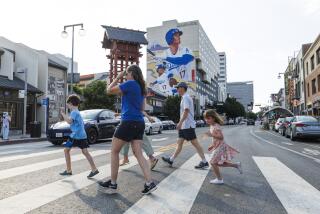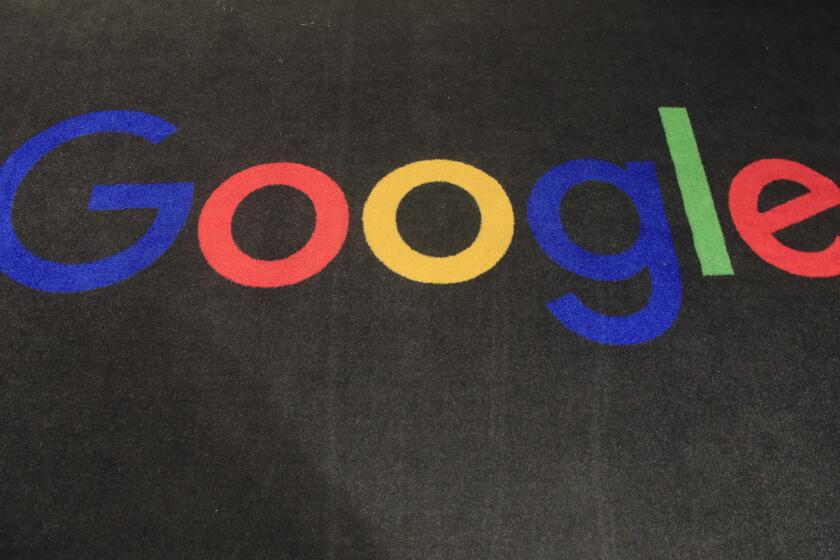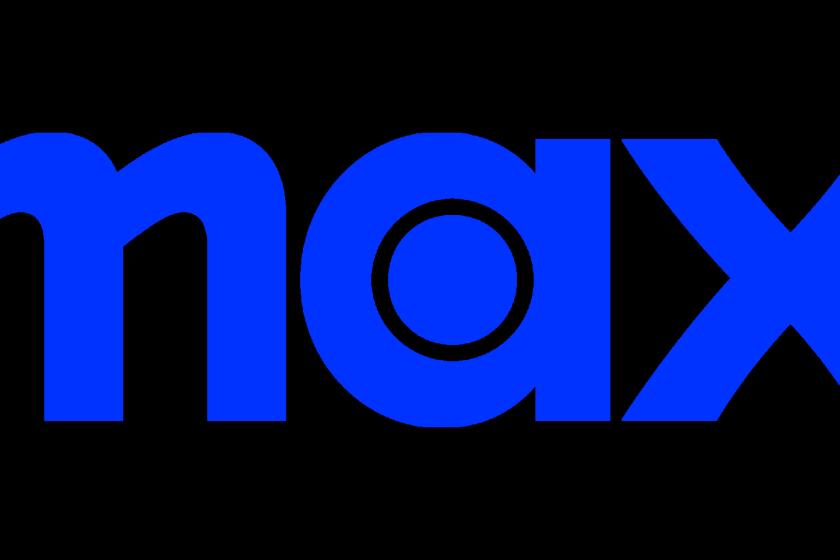The Car Drives It
- Share via
Those who prowled video arcades in the 1980s will remember “Spy Hunter,” an adrenaline-pumped, shoot-’em-up driving game in which players sit in a cockpit complete with steering wheel and pedals to maneuver an all-terrain vehicle called the Interceptor.
It was an instant hit for its maker, Midway Games Inc., which was in the arcade business then. Now that arcades are moribund, Midway has revived the classic for the PlayStation 2 in hopes of re-creating some of that financial success.
But the nostalgia factor goes only so far. Designers knew they had to give players something more than just a ride down memory lane. The game had to stand up on its own merits, said Michael Gottlieb, the 33-year-old senior producer of Midway’s updated “Spy Hunter.”
Gottlieb is a living example of the transition from arcades to home machines. His grandfather, David Gottlieb, in 1927 founded one of the first companies to mass-market pinball machines, D. Gottlieb & Co. in Chicago.
Michael Gottlieb remembers tagging along with his father in the 1970s to arcade trade shows, where he was dazzled by the latest machines. His father sold the company in 1974 to Columbia Pictures, but Gottlieb vowed at age 6 to remain in the games business. Twenty years later, he joined Midway and helped produce such titles as “Mortal Kombat,” the controversial fighting game known for its gruesome graphics.
“Spy Hunter” in some ways represents Midway’s attempt to return to old-fashioned arcade fun as a hook, rather than flashy graphics or vivid violence.
Question: What was the draw of the original “Spy Hunter”?
Answer: The car. The obsession that young males have with automobiles is legendary. Guys just love cars, especially cool, fast, high-tech cars. The strongest element in the game by far was the car. It had really cool weapons, and the pacing was good. So we knew we had to keep the car. It’s called the Interceptor G-6155, and the numbers came from its original designer’s birthday, June 1, 1955. The designer was George Gomez, and he still works at Midway. He was my guardian angel during this project. George also worked on “Tron.”
Q: What else did you keep?
A: The bad guys--Switchblade, Road Lord, Enforcer, Barrel Dumper, Mad Bomber. The weapons came back, along with the fast pace. More importantly, though, we kept the philosophical integrity of what a good video game is. I really do believe that people have over-relied on novelty, shock value to sell games rather than game play. This is what I would consider a real video game.
Q: Define a real video game.
A: A real video game requires fast reflexes. It requires you to pay attention and play it, rather than on little movies to entertain you. It ramps up and becomes more difficult. A good video game is easy to learn, hard to master. Anybody can pick up “Spy Hunter” and play. It’s not rocket science. It’s supposed to be fun. Do we offer more sophisticated game mechanics for the hard-core gamer? Yes. But is it a pure, shoot-’em-up fun video game? Absolutely. People respond to the fact that it’s just fun. I’m a hard-core gamer, but I don’t design games for myself. I design games for everybody. You want to create entertainment that is accessible but becomes progressively more challenging.
Q: Be honest. How much does the nostalgia factor play into “Spy Hunter”?
A: I see it the same way I see licensing. They can make a good game great. Or a great game phenomenal. Nostalgia is good; those things can’t be slapped on a bad game to make it good. There’s no question that good games can be catapulted into the mass market and pop culture through nostalgia. Nostalgia is wonderful. One of the things with “Spy Hunter” is that it harks back to a simpler time, when you were more concerned with playing video games, asking someone out for a date or taking an algebra test--not mortgages or deadlines. Distance makes the heart grow fonder. You forget about the bad stuff, and you just remember the good. But nostalgia is a double-edged sword with the audience. They don’t want you to destroy or deform what’s near and dear to their hearts.
Q: Did you dump anything that could be considered core to the original game?
A: The biggest element we left out was the never-ending road. In the original “Spy Hunter,” as long as you could keep yourself going, the road would never end. We didn’t keep that. We wanted to intimately control the experience. In the old days, you just add a few bad guys. You didn’t really have to worry about the environment because there wasn’t much of one. Now, the levels are so complex that the combinations you run into with an infinite road would be very complex. So we opted for quality over quantity.
Q: What did you add?
A: The first new feature is the environment. The original had a bland, indifferent environment. For this game, we re-created roads in Panama, Germany, Italy, France. Second, the car has additional transformations. If it takes enough damage, it sheds its skin and becomes a motorcycle. It can also turn into a jet ski. We focused more on dynamic transitions. Third, the vehicle has real physics. The motorcycle is far more slippery than the car, not drastically, but enough so the player has to compensate.
And the water is realistic. We’ve created a full particle system, so the vehicle will handle like a boat when it’s in water. It’ll be more sluggish. Your boat bounces and gets thrown to the left or right when it hits wakes. We had one guy spend 12 months to make the water.
Q: Where did the game’s theme song come from?
A: The game was originally supposed to use the James Bond theme, but they couldn’t get the license. So they switched to “Peter Gunn,” which was a TV show from the 1950s whose theme music was written by Henry Mancini, [a film scorer who also wrote the theme music for “Pink Panther,” “Breakfast at Tiffany’s” and “Touch of Evil”].
Q: The old Interceptor was modeled after a 1983 Z28. What’s the new one modeled after?
A: We got a lot of inspiration from the Mercedes Benz CLK-GTR in terms of lines. I’m a huge Porsche enthusiast, so some of the car’s design came from the Porsche 911 and the Porsche Spyder. But the Interceptor is a unique design. It’s a design executed against the functionality of what the vehicle has to do in the game. To tell you the truth, it got a little weird. We laid out the tires, the halogen headlamps, the license plates, everything as if it really had to be built. We became enthralled with it, and it became real to us in a weird way. But that was good because our focus on realism just made it better.
*
Alex Pham covers the video game industry. She can be reached at alex.pham@latimes.com.






